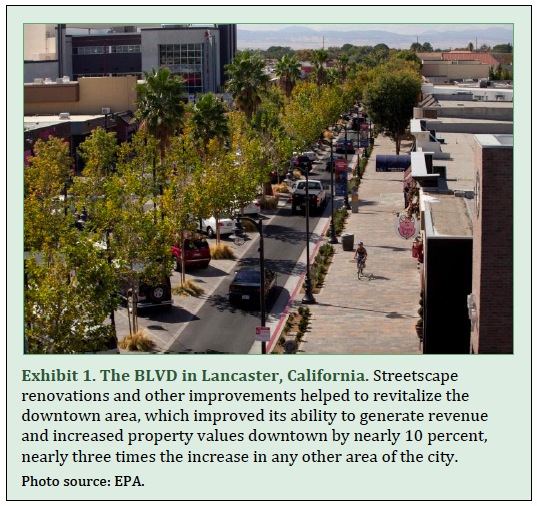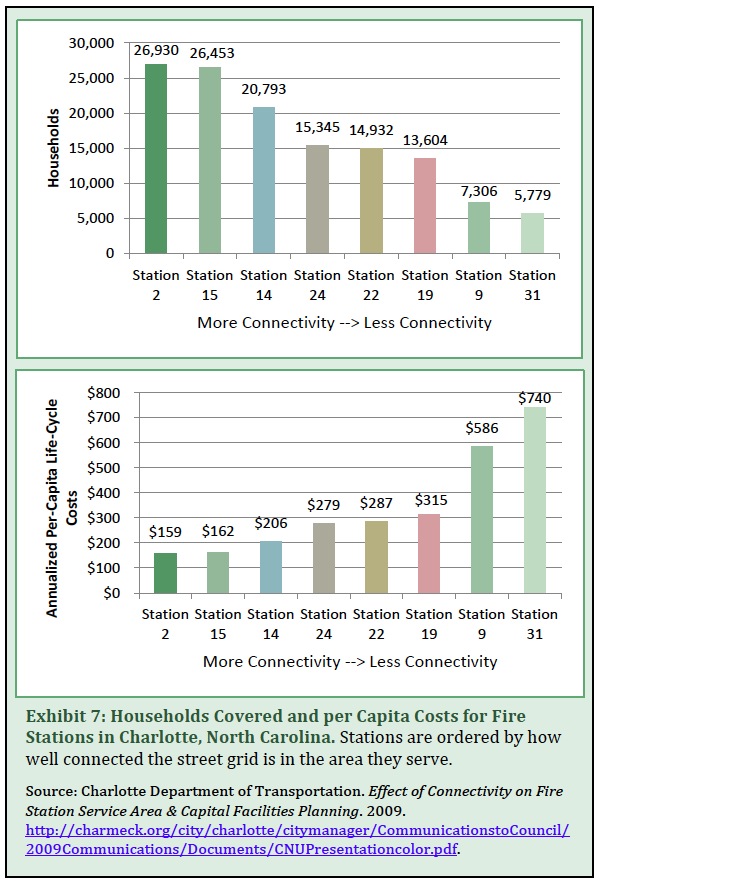ENVIRONMENTAL PROTECTION AGENCY
Executive Summary
 Local governments provide a wide variety of facilities and services. As budgets tighten, city leaders often struggle with how to reduce the costs of needed facilities and services and/or increase revenues without overburdening residents. At the same time that many jurisdictions grapple with rising costs for services, however, they also face stagnant or even declining revenues due to struggling local economies and/or shrinking state and federal funds.
Local governments provide a wide variety of facilities and services. As budgets tighten, city leaders often struggle with how to reduce the costs of needed facilities and services and/or increase revenues without overburdening residents. At the same time that many jurisdictions grapple with rising costs for services, however, they also face stagnant or even declining revenues due to struggling local economies and/or shrinking state and federal funds.
This paper reviews the latest evidence of the connection between smart growth approaches and the fiscal strength of local governments to help them make decisions about where and how to grow. Many local governments that have invested in their town centers and main streets to create compact, walkable, mixed-use communities have helped revitalize struggling areas and grow the local economy. Smart growth strategies like these can help local governments build on existing assets and maximize their return on investment while helping to protect the environment and human health.
A key smart growth strategy local governments can pursue to lower costs is supporting compact development in already developed places. Water, sewer, and road infrastructure cost less in compact development than in more dispersed development. In addition, ongoing expenses—including those for police, fire, and emergency services; street maintenance; and trash removal—are higher per capita when development is dispersed and infrastructure must serve people across a larger geographic area.
To increase revenue, many local governments think first of property taxes because they account for more than one-quarter of total revenues and are the largest locally generated revenue source. Smart growth development can help communities maximize property tax revenue without raising tax rates because higher property values are associated with:
- Compact development in established town and city centers.
- Transit connecting homes and jobs.
- Neighborhoods and streets that make walking and biking safe, convenient, and enjoyable.
Smart growth approaches can also help local governments increase sales tax revenues. Communities like Memphis, Tennessee, and Lancaster, California, have found that investing in making retail districts more walkable and bikable helps businesses and restaurants fill empty storefronts and increase sales.
With smart growth strategies, local governments are finding ways to address the problem of growing costs and shrinking revenues. These approaches can strengthen the local economy and improve quality of life while also achieving environmental and human health benefits.
Download full version (PDF): Smart Growth and Economic Success
About the US Environmental Protection Agency (EPA)
www.epa.gov
“The mission of EPA is to protect human health and the environment. EPA’s purpose is to ensure that: all Americans are protected from significant risks to human health and the environment where they live, learn and work; national efforts to reduce environmental risk are based on the best available scientific information; federal laws protecting human health and the environment are enforced fairly and effectively…”







 RSS Feed
RSS Feed